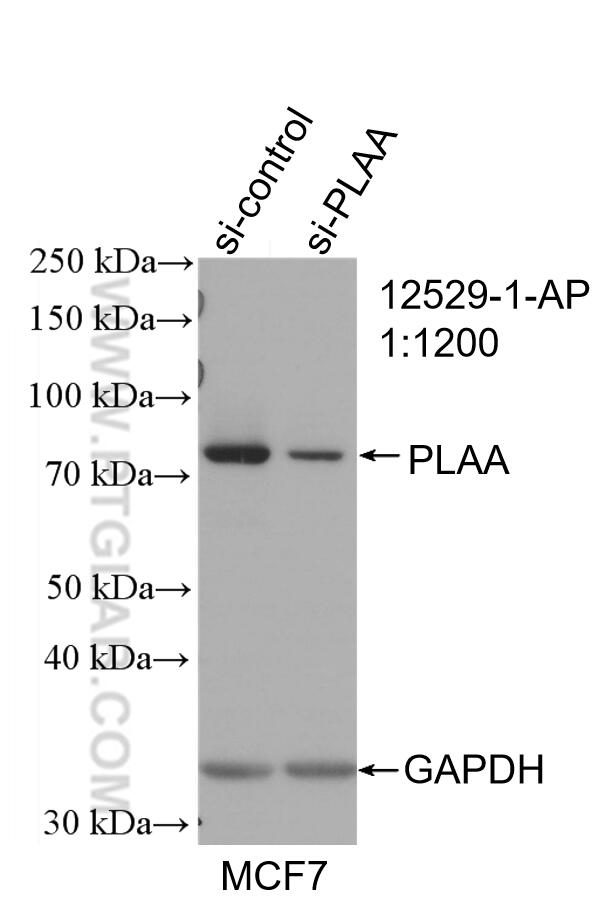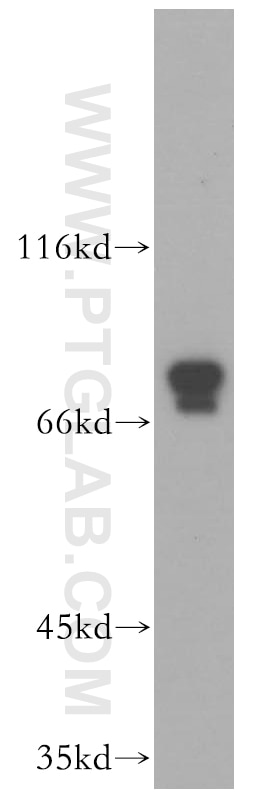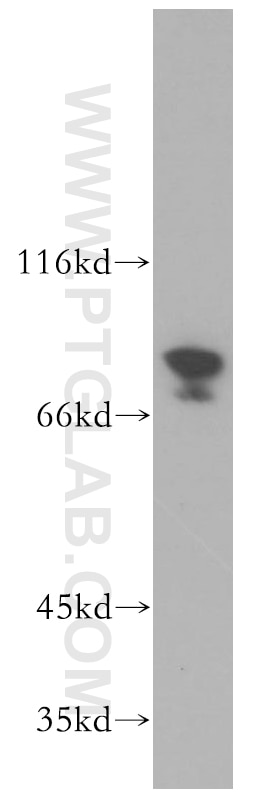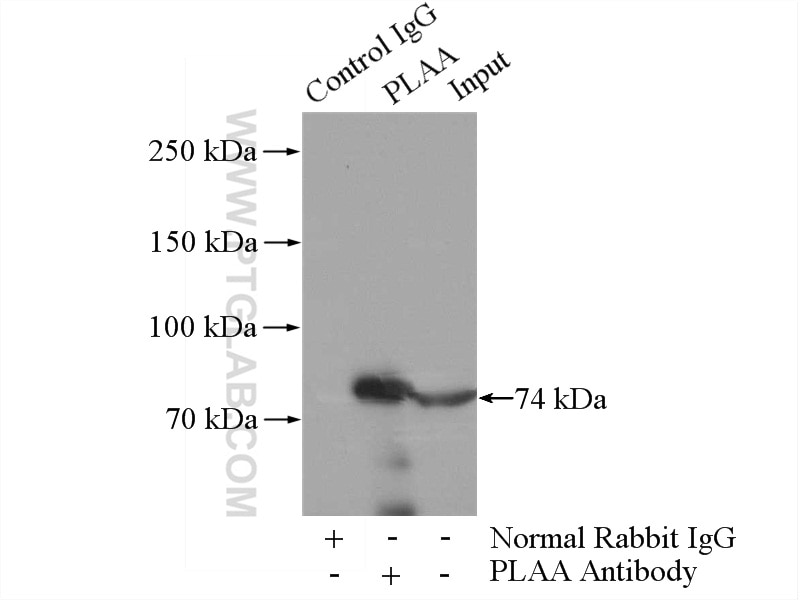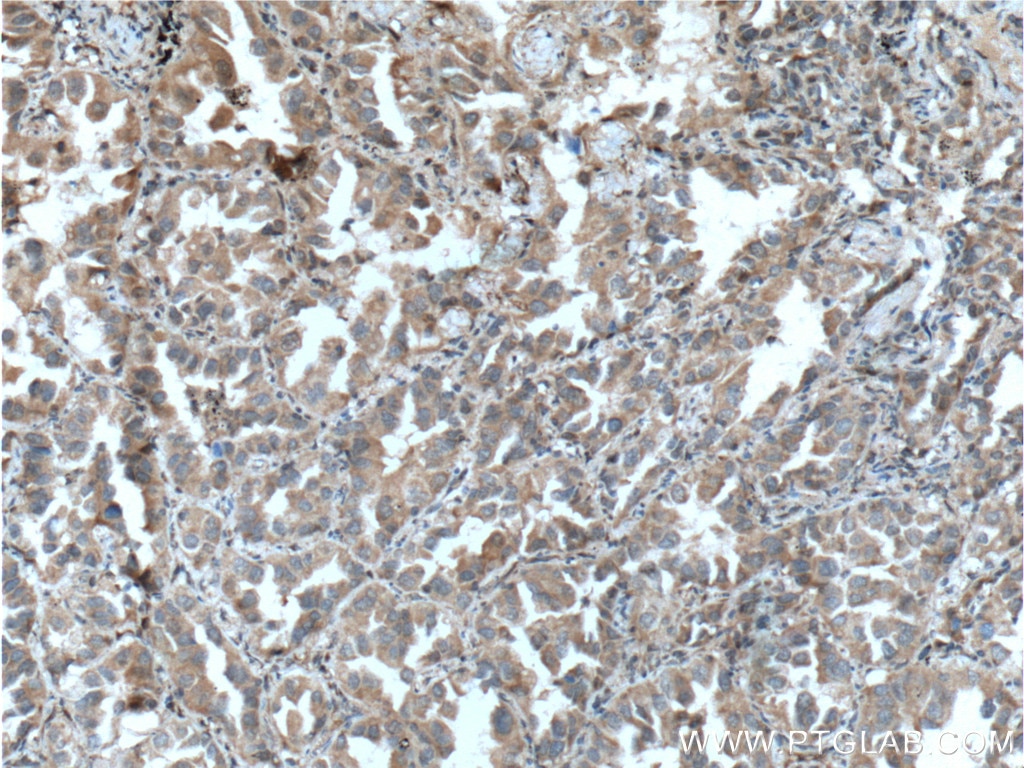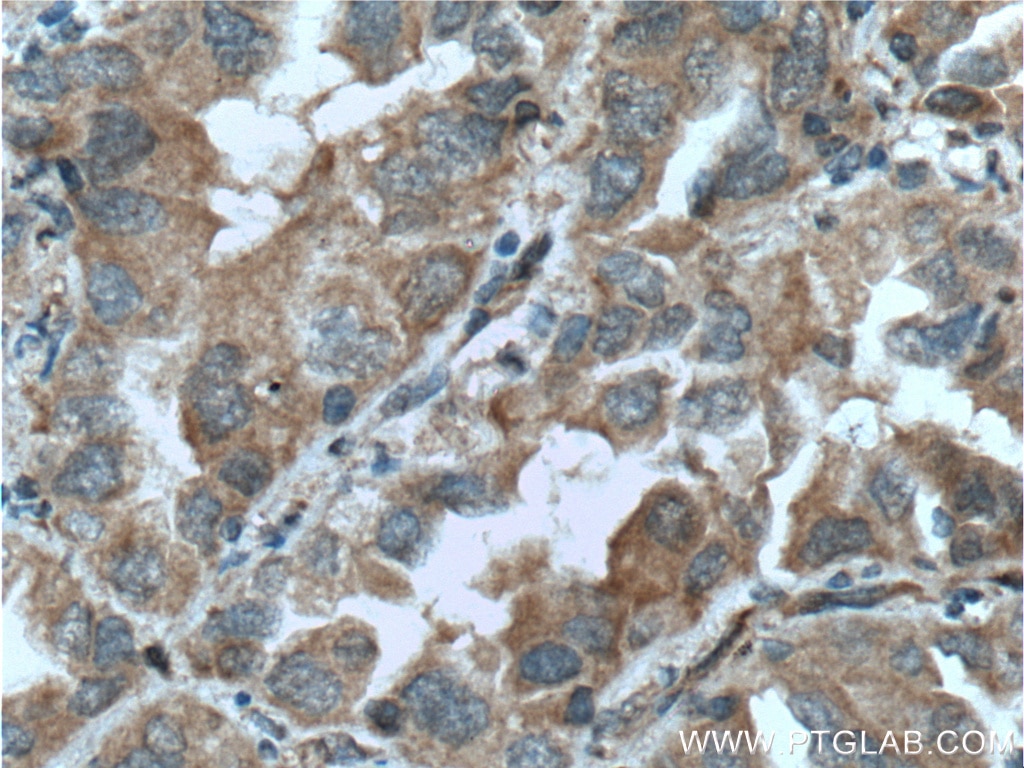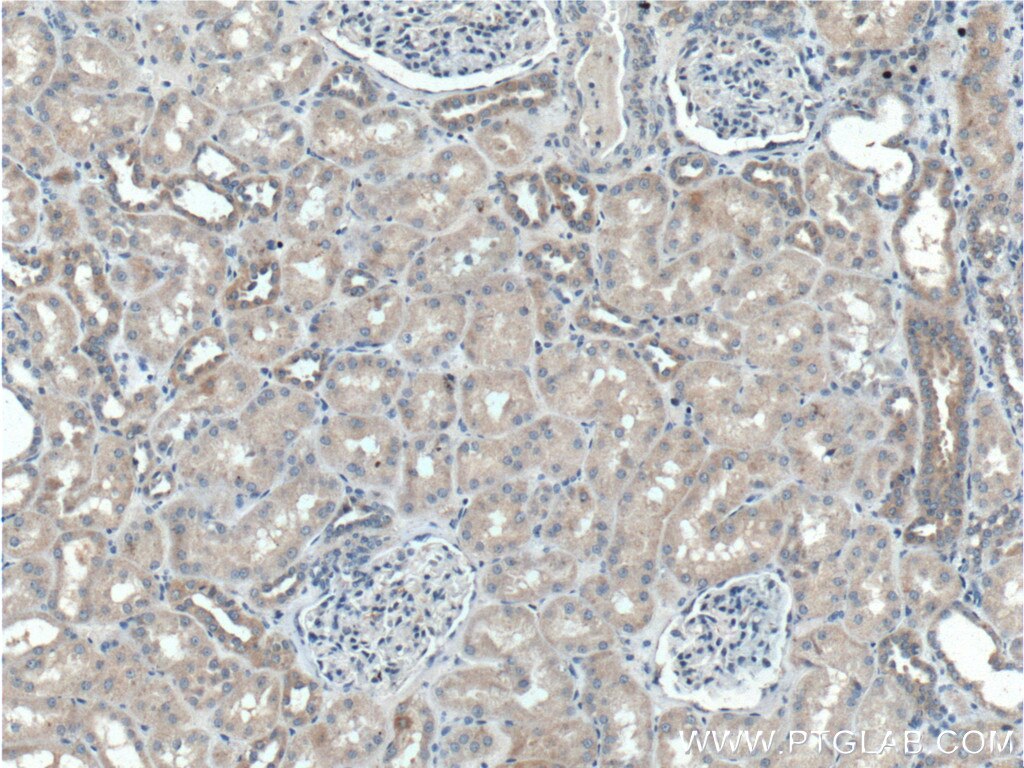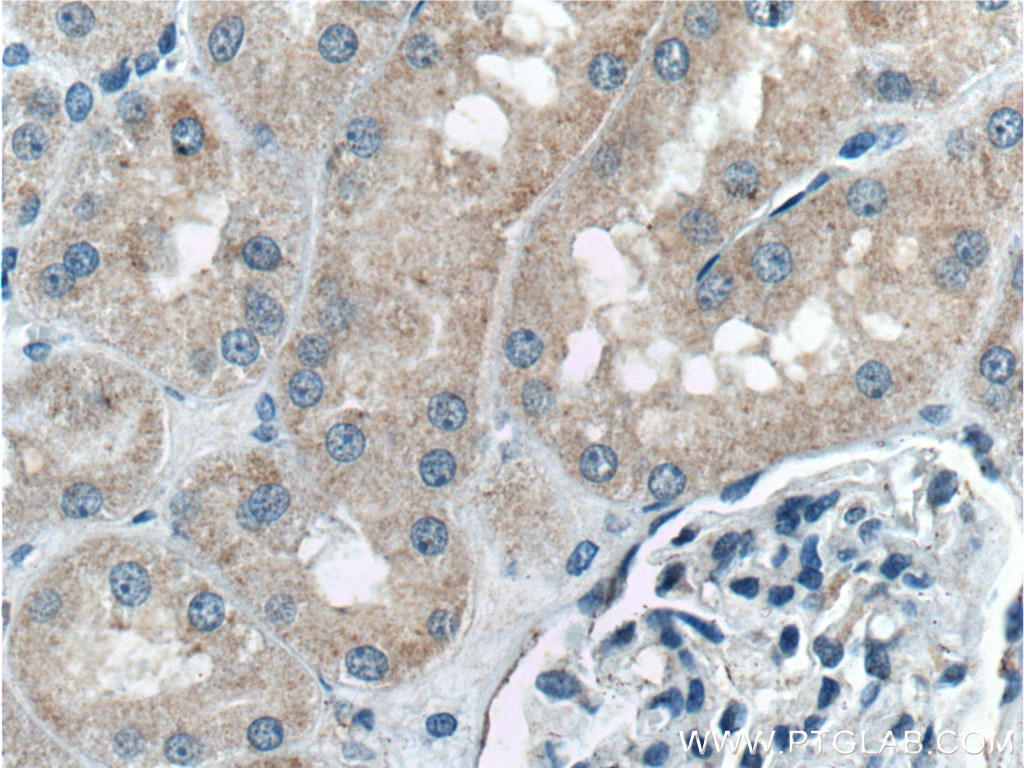- Phare
- Validé par KD/KO
Anticorps Polyclonal de lapin anti-PLAA
PLAA Polyclonal Antibody for WB, IP, IHC, ELISA
Hôte / Isotype
Lapin / IgG
Réactivité testée
Humain et plus (1)
Applications
WB, IHC, IF, IP, ELISA
Conjugaison
Non conjugué
N° de cat : 12529-1-AP
Synonymes
Galerie de données de validation
Applications testées
| Résultats positifs en WB | cellules K-562, cellules MCF-7 |
| Résultats positifs en IP | cellules K-562 |
| Résultats positifs en IHC | tissu de cancer du poumon humain, tissu rénal humain il est suggéré de démasquer l'antigène avec un tampon de TE buffer pH 9.0; (*) À défaut, 'le démasquage de l'antigène peut être 'effectué avec un tampon citrate pH 6,0. |
Dilution recommandée
| Application | Dilution |
|---|---|
| Western Blot (WB) | WB : 1:500-1:1000 |
| Immunoprécipitation (IP) | IP : 0.5-4.0 ug for 1.0-3.0 mg of total protein lysate |
| Immunohistochimie (IHC) | IHC : 1:50-1:500 |
| It is recommended that this reagent should be titrated in each testing system to obtain optimal results. | |
| Sample-dependent, check data in validation data gallery | |
Applications publiées
| KD/KO | See 1 publications below |
| WB | See 2 publications below |
| IHC | See 1 publications below |
| IF | See 1 publications below |
Informations sur le produit
12529-1-AP cible PLAA dans les applications de WB, IHC, IF, IP, ELISA et montre une réactivité avec des échantillons Humain
| Réactivité | Humain |
| Réactivité citée | Humain, souris |
| Hôte / Isotype | Lapin / IgG |
| Clonalité | Polyclonal |
| Type | Anticorps |
| Immunogène | PLAA Protéine recombinante Ag3224 |
| Nom complet | phospholipase A2-activating protein |
| Masse moléculaire calculée | 738 aa, 81 kDa |
| Poids moléculaire observé | 72-74 kDa |
| Numéro d’acquisition GenBank | BC032551 |
| Symbole du gène | PLAA |
| Identification du gène (NCBI) | 9373 |
| Conjugaison | Non conjugué |
| Forme | Liquide |
| Méthode de purification | Purification par affinité contre l'antigène |
| Tampon de stockage | PBS with 0.02% sodium azide and 50% glycerol |
| Conditions de stockage | Stocker à -20°C. Stable pendant un an après l'expédition. L'aliquotage n'est pas nécessaire pour le stockage à -20oC Les 20ul contiennent 0,1% de BSA. |
Informations générales
Phospholipase A-2-activating protein (PLAA), also named PLAP, can interact with ubiquitin and is involved in the maintenance of ubiquitin levels. PLAA contains multiple consensus domains including WD repeats, PFU domain and PUL domain. Although the function of PLAA remains unclear, ubiquitin binding of PLAA might be the central role that connects ubiquitination and degradation in ERAD. Recent finding revealed that PLAA served as a novel nociveptive mediator after incision, and its expression level is regulated by miR-203.
Protocole
| Product Specific Protocols | |
|---|---|
| WB protocol for PLAA antibody 12529-1-AP | Download protocol |
| IHC protocol for PLAA antibody 12529-1-AP | Download protocol |
| IP protocol for PLAA antibody 12529-1-AP | Download protocol |
| Standard Protocols | |
|---|---|
| Click here to view our Standard Protocols |
Publications
| Species | Application | Title |
|---|---|---|
Anesthesiology miR-203 regulates nociceptive sensitization after incision by controlling phospholipase A2 activating protein expression. | ||
Biochim Biophys Acta Mol Cell Res Phospholipase A2-activating protein induces mitophagy trough anti-apoptotic MCL1-mediated NLRX1 oligomerization
|
